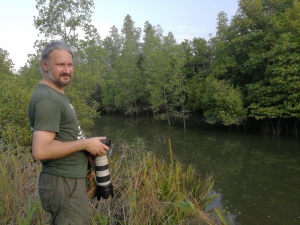Zhang, J., Saqib, H.S.A., Niu, D., Guaman, K.G.G., Wang, A., Yu, D., You, M., Pozsgai, G. & You, S. (2023) Contrasting roles of landscape compositions on shaping functional traits of arthropod community in subtropical vegetable fields.
Agriculture Ecosystems & Environment,
347, 108386. DOI:10.1016/j.agee.2023.108386 (IF2022 6,6; Q1 Ecology)
Agricultural intensification and land use transformation are among the main driving forces of the unprecedented decline of biodiversity and ecosystem services in croplands. Trait-based approaches provide a unique framework to detect the potential mechanisms of how this intensification affects biodiversity and alter ecosystem services. However, the potential relationship between arthropod traits and various types of habitats is still poorly understood, especially in subtropical vegetable agroecosystems. Here, we conducted a trait-based approach to evaluate the variable roles of different habitats on functional trait diversity and the structure of the arthropod community in brassica vegetable crops. Twenty-three conventional cruciferous vegetables fields were sampled over two years in three regions in Fujian, China. We found that the increasing proportion of non-brassica vegetable plantations and water bodies negatively affected the functional diversity of arthropods, whereas forest and grassland habitats showed a positive correlation, indicating habitat filtering for certain traits or trait combinations. This study demonstrates the importance of landscape composition as an ecological filter for vegetable arthropod community, and identifies how the proportion of different habitats selected for or against specific functional traits. Our findings support that increasing forest and grassland areas adjacent to vegetable fields can play a vital role in promoting the functional diversity of arthropod communities. Since the natural enemy assemblages supported by these habitats bear combinations of diverse traits adapted to disturbance, they have the potential to enhance pest suppression in the highly variable environment of vegetable crops.

